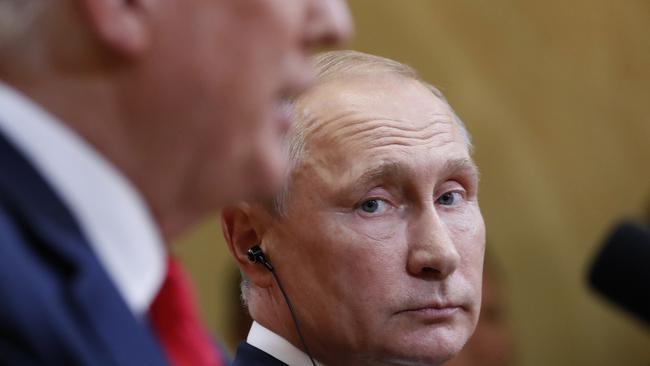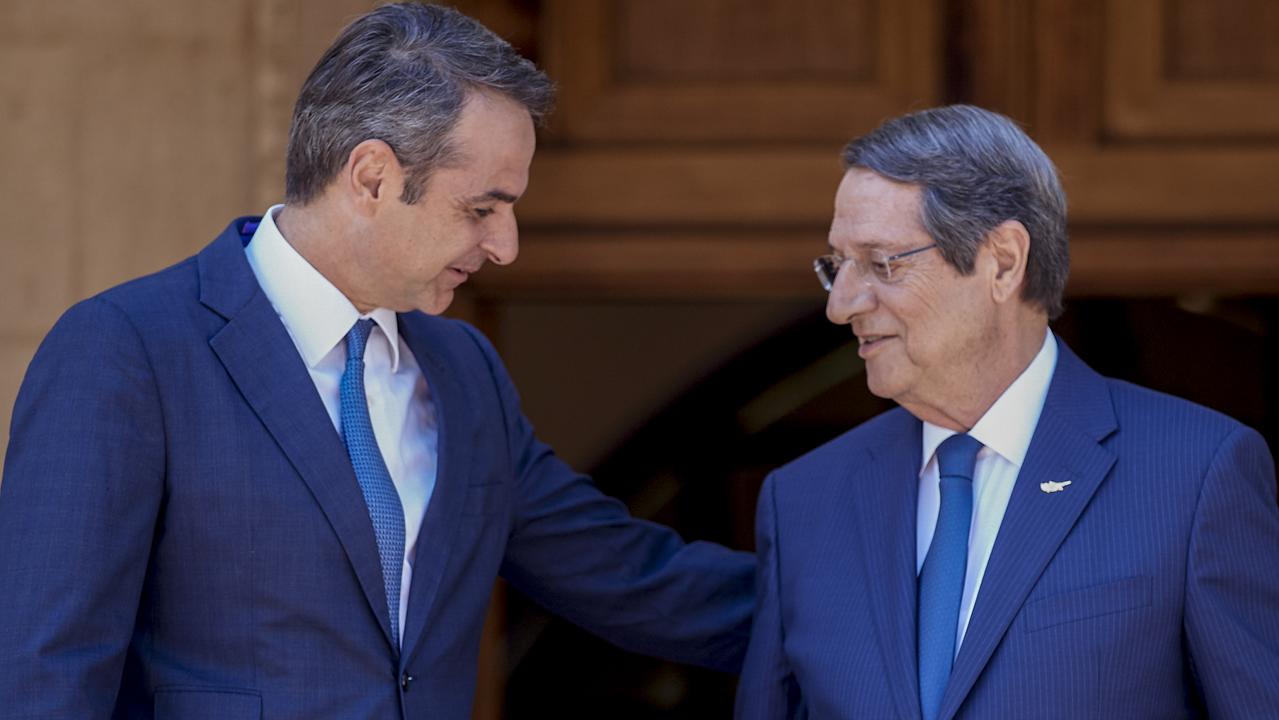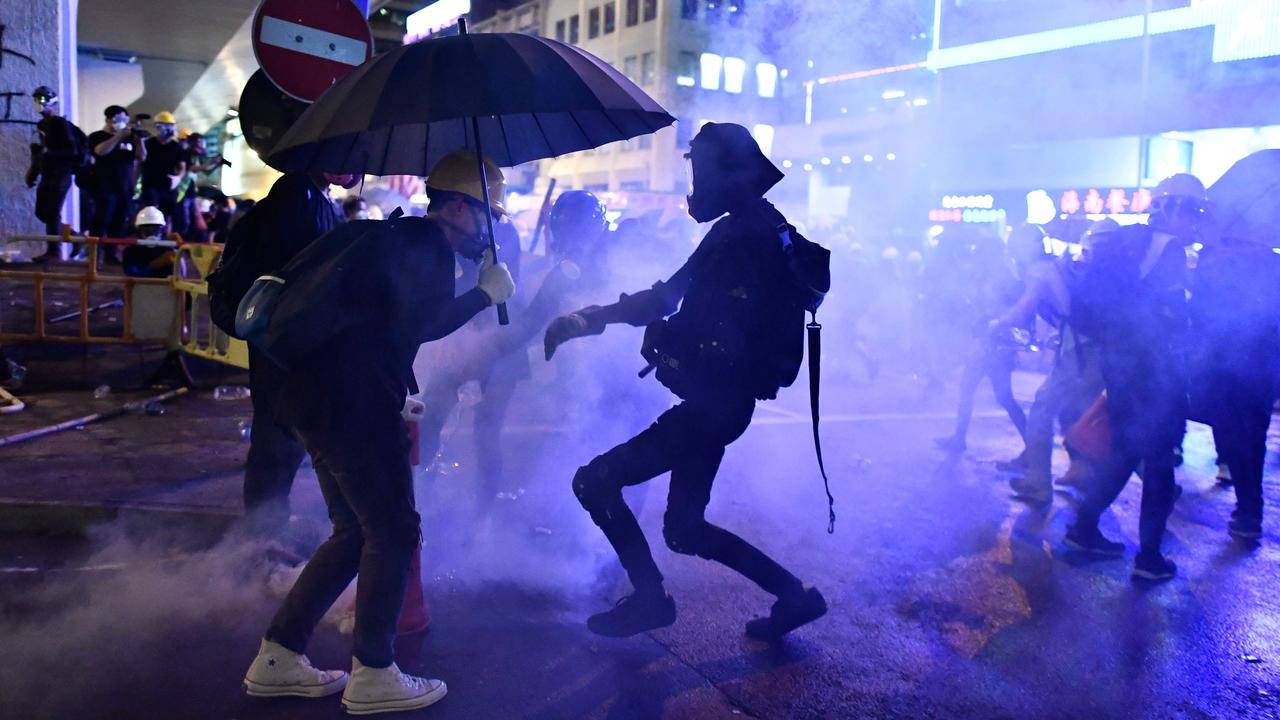Who’s really running America?
Donald Trump’s bizarre love-in with Vladimir Putin has raised a troubling question.

Leaving aside the fanciful theories that Trump is some kind of Manchurian candidate compromised by Russian intelligence, the president’s grotesque display in Helsinki exposes the widening gulf between the president and the policy settings of his own administration.
Since coming to office, team Trump team has brought a clarity and focus to US foreign policy, one very much at odds with the doubt, hesitation and strategic drift that characterised the Obama years.
The US National Defence Strategy, released in January, was one of the most forthright documents to emerge from the Pentagon since the Cold War.
Authored personally by Defence Secretary Jim Mattis it cast aside the scourge of Islamic terrorism as the main threat to US security, nominating instead the “revisionist’’ powers of China and Russia.
“It is increasingly clear that China and Russia want to shape a world consistent with their authoritarian model — gaining veto authority over other nations’ economic, diplomatic and security decisions,” Defence Secretary Mattis said.
The strategy also called for “a robust constellation of allies and partners, (which) will sustain American influence and ensure favourable balances of power that safeguard free and open international order”.
Australian strategist Professor Paul Dibb hailed the document as one of the most significant expressions of American strategy to emerge in decades. Former Defence Minister Kim Beazley described it as “Trumpism slammed into reverse”.
The Defence Strategy was no mere piece of paper. Like the National Security Strategy before it, it is the instruction manual for US strategic planners.
It made clear that beneath the President’s nutty rhetoric there is a kind of doctrine at work. Someone in team Trump, perhaps not the president himself, understands that we are living through an era of strategic transition, one where the main threat to world peace will come from old-fashioned great power rivalry.
Compare this to the bumbling foreign policy of the Obama era.
It was under Obama that China weaponised the South China Sea, ignoring US warnings not to militarise the disputed islands off its neighbour’s shores. Within five years Beijing had fortified the region to the point where, as the US Navy now admits, the only thing capable of dislodging China is all-out war.
It was under Obama that “red lines” were declared in Syria, then crossed and crossed again, emasculating the threat of US force and making it more likely that in the future Washington will have to use actual violence, rather than merely threaten it.
It was under Obama that the policy of “strategic patience” was applied to North Korea (yes, that was actually the term), essentially a blind hope the regime would collapse before its weapons program could threaten America.
And it was Obama who lifted the boot off Iran’s throat, partly in the age-old liberal belief that exposure to the international order would in time soften an autocratic regime.
Say what you will about Team Trump but they share none of these delusions.
What is hard to square is the President’s gushing praise for Putin, and before him Kim Jong-un, with the hard-line outlook of his own administration.
One explanation is that Trump doesn’t really believe in his own policies, or at any rate doesn’t take them seriously.
But another is that the Trump administration is bigger than Trump himself. On this reading the President’s words aren’t quite as consequential as they appear. Trump’s wrecking ball tour of Europe is a good example of this. The President attacked NATO allies for underspending on defence, belittled British Prime Minister Theresa May and branded the European Union a “foe” just days before he met and coddled a real foe, Vladimir Putin
And yet the alliance stands, relations with Britain are unchanged and the EU Council president Donald Tusk tweeted moments after the President’s insult that the EU and the US were “best friends’’.
“Whoever says we are foes is spreading fake news,” Tusk wrote. Most importantly, sanctions against Russia remain in place.
Around the world another form of strategic patience is being practised.
In Brussels, London, Tokyo, Seoul, Japan and Canberra Washington’s allies are quietly waiting out the Trump presidency in the hope that the deep historical and institutional ties that bind them to America can withstand the battering the president seems intent on delivering.
Let us hope they are right.







Donald Trump’s bizarre love-in with Russian strongman Vladimir Putin has raised a troubling question. Who is running America?